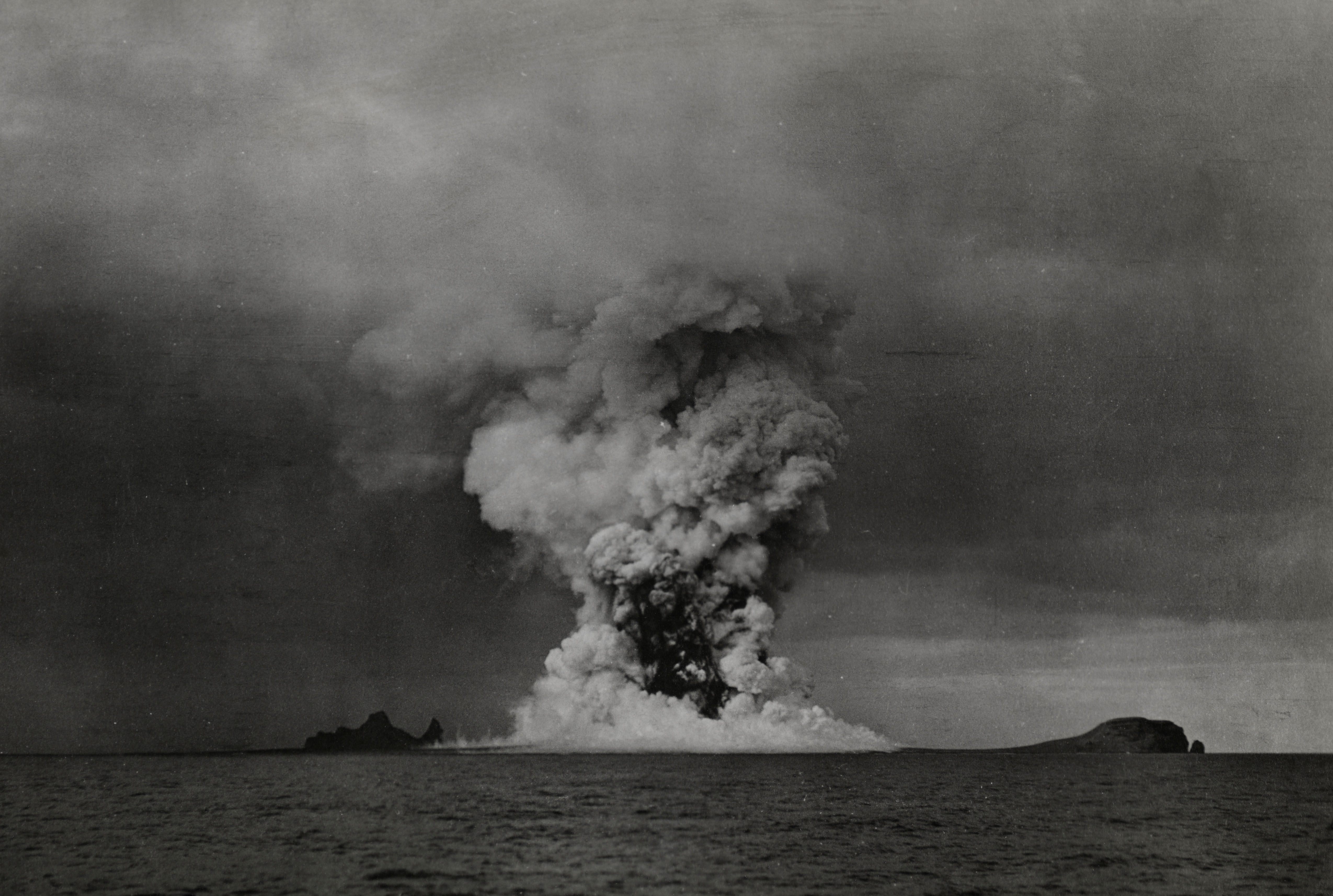Prepare Yourself for the Sound of Volcanic Thunder!
The first-ever recording of the phenomenon sounds a little like a typewriter.

Our planet produces all sorts of sounds, but some of them—perhaps because they are rare, or at very low frequencies, or overwhelmed by other sounds—have eluded our ears. For example, amid the din of a volcanic eruption, electrical discharges course through the ash plume, generating lightning and thunder. Scientists have now recorded this most metal of all geological sounds for the first time. It’s volcanic thunder, live from the Aleutian Islands!
In March and June 2017, geophysicists were studying the eruption of Bogoslof Island, in the Pacific Ocean near Alaska. The stratovolcano—comprised of sandwiched layers of lava and ash—is mostly submerged, but the top 300 feet breach the surface. The researchers studying it were recording audio using an array of microphones on the island of Umnak, roughly 40 miles away.
The actual sound of the volcanic thunder is not quite what you might expect, in part because it has been sped up to make it audible. The rolling rumble in the recording below—evocative of a heavy summer downpour—is actually coming from the eruption itself. Listen closely for the clicks that sound like clacking typewriter keys. That’s the thunder.
In some ways, capturing the recording was a lucky break. “This was an opportunistic observation,” says Matt Haney, a scientist at the Alaska Volcano Observatory in Anchorage, and leader of the project. Haney and his collaborators had the microphones set up to collect various types of data. They noticed that Bogoslof’s eruptions brought a lot of lightning. Where there’s lightning, they reasoned, it’s a good place to listen for thunder. “It’s just a question of whether you can distinguish it from the noise that the eruption itself was making,” Haney says. “That was the real challenge.”

Volcanic thunder is hard to detect because it occurs at such a low frequency, and within the cacophony of an eruption itself. A middle C is about 261 Hz, and volcanic thunder is around 10 times slower—around 26 Hz. The sound of the eruption is slower still, around 2 Hz. The researchers first saw the thunder in their data, but they didn’t know whether they’d be able to decipher it sonically. “When I played it at normal speeds, it didn’t make any sounds on phone or laptop,” says Haney. So they had to tinker—once sped up 60 times, the series of clicks became particularly audible and distinct.
In their new paper, recently accepted for publication in Geophysical Research Letters, Haney and his colleagues explain why seismic activity of a submarine volcano in a remote region of the ocean matters. Even though the area is sparsely populated, Haney says, “thousands of people per day will pass over it in airplanes.” The islands lay along the airplane routes that arc between the western United States and Asia, and volcanic plumes can grind travel to a halt. “We monitor the volcanoes because it’s important to keep aviation and ash clouds separated,” he adds. “They don’t mix.”




















Follow us on Twitter to get the latest on the world's hidden wonders.
Like us on Facebook to get the latest on the world's hidden wonders.
Follow us on Twitter Like us on Facebook